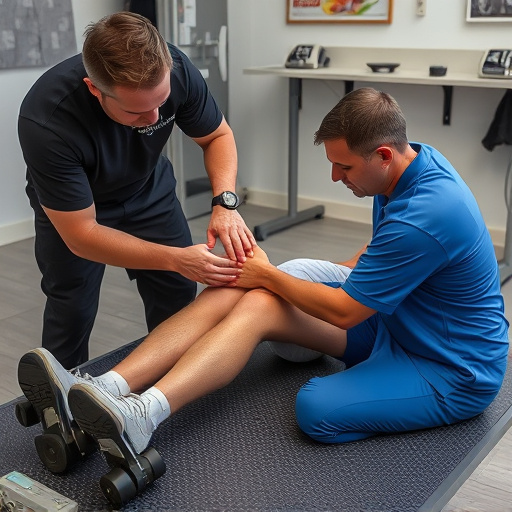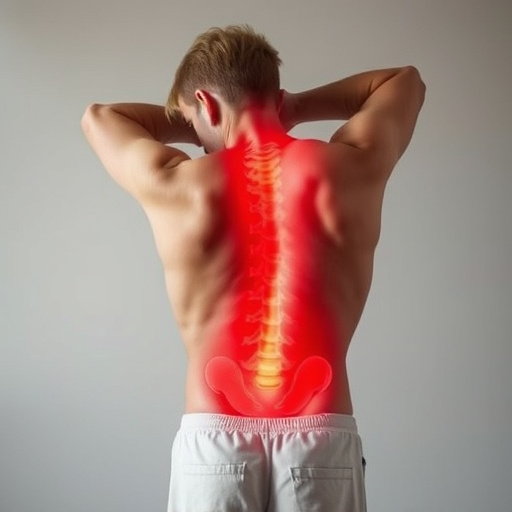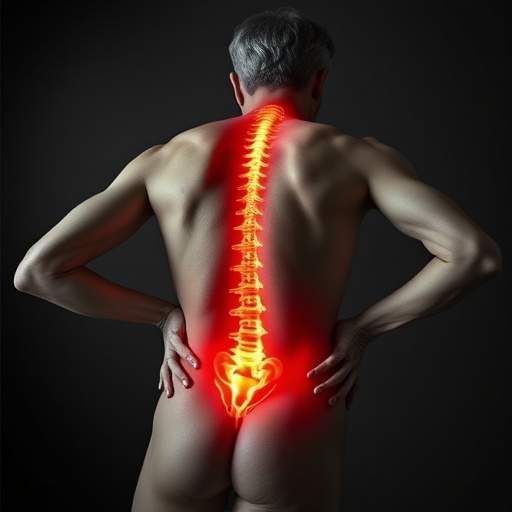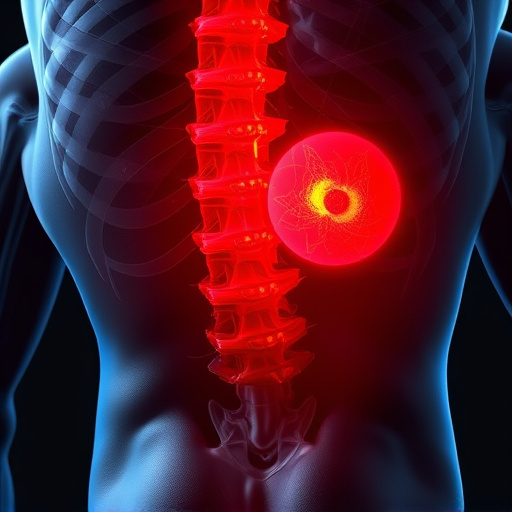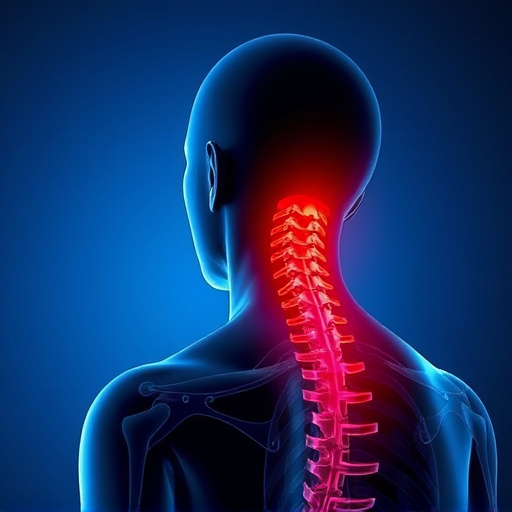Post-accident rehabilitation is a crucial process for full recovery from traumatic events like car accidents or falls, with treatment plans personalized based on injury severity and symptoms such as chronic pain, muscle weakness, and sensory impairments. The duration varies greatly depending on age, severity, pre-existing health conditions, and motivation, with younger individuals and less severe injuries typically recovering faster. Active participation in therapy and consistent home practice significantly improve outcomes. Effective strategies include pain management, tailored exercises, cognitive therapy, and collaboration among physical, occupational, and mental health professionals.
“After a traumatic accident, understanding the journey towards full recovery is crucial. This article offers a comprehensive guide to post-accident rehabilitation, exploring the factors that shape recovery timelines. From initial assessment to the final stages of healing, we delve into what influences this process and provide valuable insights for those navigating rehabilitation.
Learn about strategies to optimize recovery, ensuring you’re equipped with knowledge to manage expectations and embrace the path to full physical and emotional health.”
- Understanding Post-Accident Rehabilitation: A Comprehensive Overview
- Factors Affecting Recovery Time: What Influences the Process?
- The Road to Full Recovery: Strategies and Timeline Considerations
Understanding Post-Accident Rehabilitation: A Comprehensive Overview
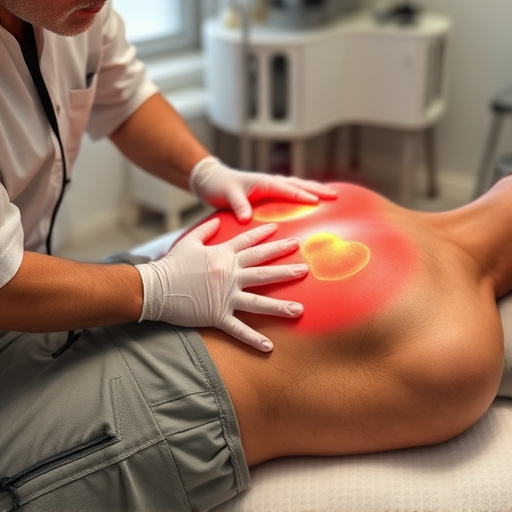
Post-accident rehabilitation is a crucial process designed to help individuals fully recover and regain their physical and cognitive abilities after a traumatic event, such as a car accident or fall. This comprehensive overview aims to shed light on the various aspects of post-accident rehab, emphasizing its importance in achieving optimal recovery outcomes.
The duration and intensity of rehabilitation vary based on the severity of injuries sustained during the accident. Common symptoms addressed in rehab include chronic pain, muscle weakness, and sensory impairments. For instance, sciatica relief is a significant focus for those experiencing lower back and leg pain due to nerve damage. Similarly, headache relief is essential for managing post-traumatic headaches that can persist long after the initial incident. Through personalized treatment plans, patients engage in various therapies, including physical therapy, occupational therapy, and sometimes speech therapy, to enhance their muscle recovery and overall functional abilities.
Factors Affecting Recovery Time: What Influences the Process?
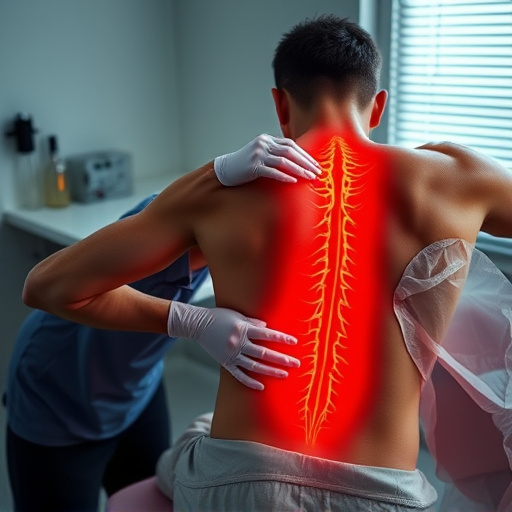
The duration of post accident rehabilitation and full recovery can vary greatly from individual to individual. Several factors influence this process, each playing a crucial role in determining how quickly someone can regain their mobility and functionality. Age is one such factor; younger individuals often experience faster recovery times as their bodies possess higher regenerative capabilities compared to older adults. The severity of the accident injuries also significantly impacts recovery. More severe traumas or multiple injury sites may extend the rehabilitation period.
Pre-existing health conditions, including chronic illnesses or previous injuries, can complicate the road to recovery. These underlying issues might require additional time and tailored treatment approaches to manage before progressing with post accident rehabilitation. Furthermore, motivation and adherence to the prescribed rehabilitation program are essential; active participation in therapy sessions and consistent practice at home can expedite healing and improve overall outcomes, potentially leading to faster back pain relief or sciatica relief, depending on the specific injuries.
The Road to Full Recovery: Strategies and Timeline Considerations
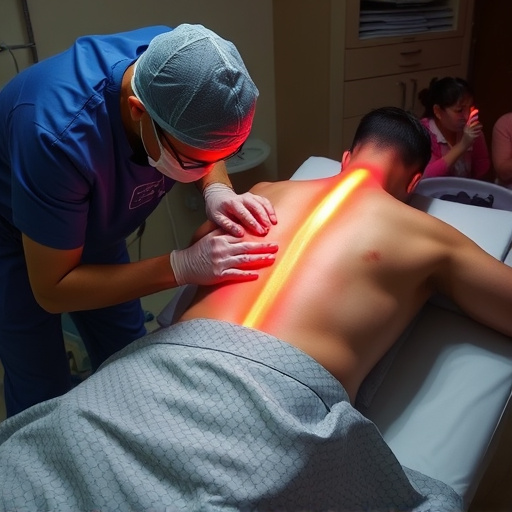
The journey to full recovery after a post-accident injury is a complex process, and every individual’s path is unique. It involves a combination of medical care, therapy, and personal dedication. The timeline for auto accident recovery can vary significantly depending on several factors. These include the severity of injuries, age, overall health, and adherence to rehabilitation protocols. While some individuals may experience significant improvements within a few weeks through dedicated rehab services, achieving complete physical and emotional recovery could take months or even years.
Effective post-accident rehabilitation strategies focus on pain management, tailored exercises, and cognitive therapy. Physical therapists play a crucial role in helping patients regain strength, mobility, and flexibility. Additionally, occupational therapists assist in regaining daily living skills, while psychologists support the patient’s mental health journey. By working collaboratively with healthcare professionals, individuals can navigate their road to recovery more effectively, ensuring they receive comprehensive care throughout every stage of auto accident recovery.
Post-accident rehabilitation is a personalized journey, with recovery timelines varying greatly. Understanding the factors influencing this process empowers individuals to set realistic expectations. While there’s no one-size-fits-all timeline, adopting a proactive approach, adhering to professional guidance, and consistently engaging in prescribed therapies can significantly contribute to a successful full recovery. Remember, each step forward, no matter how small, brings you closer to reclaiming your mobility, strength, and independence.








